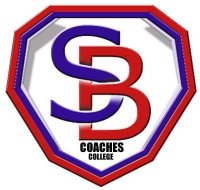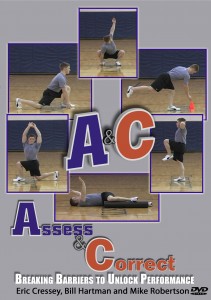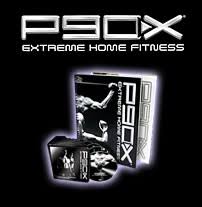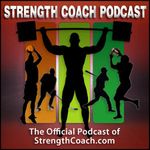We are always looking to improve our guys’ explosive power. While in the in-season phase, we will back off on some of the olympic variations that we use such as Hang Cleans. The reason is that some of our guys will have problems with the hands and/or wrists due to getting slashed or from fighting. Also, I like to stay away from exercises where lower back problems can occur. We’ve found DB jumps to be a great alternative in improving our players’ explosive power- especially in-season. Typically, we will do 2-4 sets of 5-8 reps on these. We focus on getting our guys to be as elastic as possible while keeping the chest up, and preventing the knees from caving in.
A day late with the random thoughts for the week, but here we go:
1- A great article was posted on this week on T-Nation.com. Nate Green’s interview with Bret Contreras was really good. I’ve read a lot of Bret’s posts on Strengthcoach.com. He is a really smart guy who has really got me interested more in supine hip extensions. Specifically, how to load it properly. In addition to all the glute activation exercises that we do, we’re always looking for ways to load hip extension without the spinal loading. Bret is on to something here.
2- I have just completed week 7 of Jim Wendler’s 5-3-1 training program. (Sorrry, but it is modified due to my continous low back pain- I don’t deadlift or squat). I really like it because it is really easy to implement and make progress with. So far, so good. It is a simple, yet effective program.
3- Mike Robertson, Eric Cressey, and Bill Hartman, have an excellent product in Assess and Correct- Breaking Barriers to Unlock Performance. I’ve started to read this as I was fortunate to receive an advanced copy. This is really good information. Every evaluation seems to be really easy to implement into your program. Also, there are corrective exercises to address any dysfunctions. These guys do a great job of bridging the gap between strength and conditioning coaches and physical therapists while also making it easy for guys like me to understand.
 Part of what I want to do here on the blog is to let my readers know of some websites that I check out and find to be valuable resources in the Strength and Conditioning field. The sites that I will recommend will always be sites that I endorse based on the fact that I think they are great places to get information.
Part of what I want to do here on the blog is to let my readers know of some websites that I check out and find to be valuable resources in the Strength and Conditioning field. The sites that I will recommend will always be sites that I endorse based on the fact that I think they are great places to get information.
SB Coaches College is a site that was founded by Strength and Conditioning Coaches Shawn Windle, Brijesh Patel, and Robb Rogers. Shawn is currently the Head Strength and Conditioning Coach of the Indiana Pacers. Brijesh is currently the Head Strength and Conditioning Coach at Quinnipiac University. Rob is now working for the National Strength and Conditioning Association. All of these guys are very good and very bright strength and conditioning coaches who I have gotten to know over the last couple of years. They are also really good guys.
The site contains several well written articles, programs, and power point presentations, as well as a store where you can buy some of their products.
Check it out at http://www.sbcoachescollege.com/
I’ve decided to get on the bandwagon of posting some of the things I have been thinking about and have done during the past week in addition to my coaching responsibilities. I will try and update every Friday. So here it goes:
1- The P90X may be the best workout system that I have seen advertised on television (Perfect Pull Up is second). A few of my friends have started the program. What I like about it is the organization of the program and most importantly, you are required to move. Although, I don’t think I would use it with my athletes, I think it is great for people who need a regimented routine.
2- I read the book Crush It- Why Now is the time to cash in on your Passion, by Gary Vaynerchuck. I actually finished it in a day. I really like the concepts described in the book to help utilize social media. What I also really like is the fact that the author explains that by having a passion for something and applying hard work, you can see positive results. Kind of a breath of fresh air to read a book where they promote hard work. I’ve actually taken action on a few of the tips in the book.
3- Strength Coach and friend, Mike Boyle, has released his Functional Strength Coach 3.0. I got mine yesterday and watched the first dvd last night. As usual, Mike has done it again by releasing a great product. It seems like Mike is always one step ahead when it comes down to program design implementation and progression. I look forward to watching the rest of them.
4- On T-muscle this week, there was another great article called “Bigger, Better, Faster, Longer” featuring an interview with Dan John. Dan is a really good writer and seems to be an even better coach.
5- Speaking of Mike Boyle, check out this funny video Anthony Renna put together.
http://www.xtranormal.com/watch/5543021/
That’s it. Let me know what you think. Have a great weekend.
My good friend Anthony Renna has done an unbelievable job with the Strengthcoach Podcast. To me, it has been a great educational resource. I usually try to listen to it on my ipod or I will put them on cd’s for my car. I was very fortunate to be interviewed on episode 1 back in September of 2007. You can access my interview and all of the episodes of the StrengthCoach Podcast at http://www.strengthcoachpodcast.typepad.com/
I saw this commercial during last night’s game 6 of the baseball game. Check it out.
Whenever I have the opportunity to interact with coaches and parents, I’m always asked the question: When can my son/daughter start strength training?
My general response is around 12 to 14 years old, depending on the physical maturity level of the child, but I always have to take into consideration their perception of strength training.
Usually, the perspective from a parent’s view is lifting really heavy weights with barbells or dumbbells while grunting and straining through each repetition. That’s probably not something I’d recommend for kids under the ages of 12-14.
But when you think about it, kids are already strength training in lots of different ways; it just may not seem like it because it doesn’t have any real structure.
Some of the most basic strength-training advice is to “master body-weight exercises first, and when proper technique is established, add resistance.”
That’s true in a traditional sense, because we wouldn’t want to put a barbell with weight on a young kid’s back and ask them to do squats without being able to execute a proper body-weight squat. However, how many times do see young kids doing body-weight exercises without thinking that they might be “strength training?”
Have you ever seen a kid squat down to pick something up? Or maybe they do some plyometrics while playing games that include jumping or hopping at the park? I really enjoy watching my 3-year-old son do this all the time; so is 3 years old too young for plyometrics?
As parents and coaches, we may tend to be afraid of having our young athletes participate in a series of exercises because we may view it as traditional strength training. However, we may not realize that kids may already be strength training or doing plyometrics without even thinking about it.
When kids put on their hockey equipment and go out and practice, that could technically be considered strength training when you think about adding resistance to body weight. Off the ice, kids are squatting, lunging, running, hopping and skipping all the time; unfortunately, there are also many kids who are sitting on their butts way too much while playing video games or surfing the Internet after school.
First and foremost, I would recommend young kids to start playing more sports and games. As for a traditional routine, in my opinion, there’s nothing wrong with kids doing body-weight exercises such as push-ups, pull-ups, squats, lunges and step-ups, which are movements that kids should be doing. These exercises done with strict adherence to proper technique are beneficial.
Kids can start understanding that strength training for hockey should include exercises that involve multi-muscle and joint movements. Leave the single-joint exercises, such as bicep curls and leg extensions, for the aspiring bodybuilders. Then, when they’re 12-14 years old, they can start adding resistance in the form of a barbell or light dumbbells and start progressing from there.
But first, we may need to get some of them off their butts and start moving.
Since I’ve been working with hockey players, I’ve been really fortunate to be around some very talented players from all over the world. What I have realized is that their superior talent level combined with their incredible work ethic, has allowed them to play at the highest level possible. What most of these players also have in common is that while they were growing up, they also have played other sports. Some of the sports that were played include baseball, football, lacrosse, soccer, tennis, and golf. Players who I know of who were also outstanding at other sports include former Duck Adam Oates, who was also an outstanding lacrosse player, and current Head Coach of the Pittsburgh Penguins and former Duck, Dan Bylsma, who was a great baseball player and also an outstanding golfer. Chris Drury, who currently plays for the New York Rangers, was a pitcher on the USA little league baseball team that won the world championship over 20 years ago in 1989. There are several players on the current Ducks’ roster who were great at other sports. The list can go on and on for current players in the NHL.
My point is that these guys all played different sports while they were growing up. They didn’t just play hockey or “specialize” in hockey. The skills that they learned in other sports have helped them develop the skills that they now have in professional hockey.
Today’s young hockey players are spending way too much time just playing hockey. Hockey is now a year-round sport for many young kids (especially if they’re good). There is always the next team to try out for or the camp that “all of the top players in the area” are going to. What is also really interesting to me is how many of these kids have their own “private” lessons. Why? Tell me how taking private lessons is going to help kids become better team players who work hard together to achieve common goals.
With physical education in the United States drastically decreasing, the need to play more sports is more important now than it ever was before. Sports like soccer, football, lacrosse, basketball, baseball, field hockey, volleyball, and softball which emphasize team work should also be played throughout the year. Developing speed, agility, quickness, balance, and body awareness in other sports can translate to having those attributes on the ice. What I find most important, especially with the absence physical education, is the general fitness gained in playing other sports.
Hockey is a team game. The better teams in the NHL have a bunch of hard-working players who play for each other and put team success before individual success. The really good players realize that their team’s success will help them have individual success in the long run. Playing different sports while learning life lessons in teamwork and accountability, all while having fun, will help any youngster develop into a better hockey player.
Here is a link to an interview I did with my good friend Glenn Harris at Game Fit Performance Training:
Many times while I am leaving the rink and I am get in my car after work; I may see some young hockey teams doing their “dry land training” before their practice on the ice. I may see something that I think is really good where the coach actually put in some thought into a progressive session with the focus on helping the players get better in a fun environment. Unfortunately, and most of the time, I may see something that in my opinion, isn’t beneficial at all for young hockey players. What is the good and what is the bad? To me, for a young player, they need to be having fun while working on the physical components that would help them become better athletes. Drills such as agilities, plyometrics, tag games, and speed drills that promote competitiveness and enjoyment should be what are most important. What I don’t like to see are kids being told to take long runs around the block or the arena. Sometimes, and I still see this at much higher levels, I may see young players riding stationary bikes at a steady state pace for a long period of time. Ask yourself, how many marathon runners play hockey to help them get prepare for marathons? Or, does Lance Armstrong play hockey to prepare for the Tour de France? It makes no sense and unfortunately, in a lot of situations, today’s training for hockey is done this way!
At a recent seminar that I attended, a speaker talked about an athlete’s “speed window”. He was quoting a researcher who is the world’s expert on young athletes and the maturation process. What he said was that boys and girls have 2 windows of developing speed in their maturation. For boys, the windows are ages 7-9 and 13-16. For girls, their windows are between 6-8 and 11-13. Basically, what he was saying was that during this time, to take advantage of this opportunity, kids should be doing athletic movements as fast and hard as possible. In relating this to hockey, it could mean sprinting and jumping while doing dry-land training, while also skating fast and shooting the puck as hard as they can on the ice. Usually, when I see these youngsters on these long, slow runs or rides, guess how old they are? They are usually between 11 and 13. They are training to be slow during the optimal time for developing speed.
It now makes even less sense to have these youngsters go out on these long distance runs or these long stationary bike rides to help them play in a game where speed is the most important factor. Some of the best quotes I have heard from some of the strength and conditioning coaches that I have learned from include “Train Slow, Be Slow” and “Want to run fast then you better be running fast”. (I think this would also apply to skating). Off-Ice training sessions and on-ice practices should always take this into consideration.



